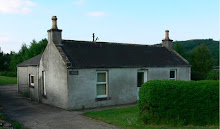I remember thinking how great it would be if there was a type of very long cinema that you could come and enjoy for a time, but leave whenever you wanted, not when the credits rolled and ushered you out the door. Shortly afterwards I learned that such films did exist, and had for decades.
Recently I've been hoping to curate an exhibition of Slow Cinema for my friend's animation festival in Ottawa, but given that I bailed on them this year (as juror and curator of a small show) to come here, that ship has probably long sailed. The festival is quite adventurous and I thought it would be funny to screen the following films, which are about as un-animated as you can get:
Tree Movie (1961). Fluxus artist Jackson Mac Low, inspired by a La Monte Young score that called for a note to "be held for a long time", wrote a script for a film that that requires a camera to film a stationary object, for an indeterminate amount of time (see below).
Probably the most famous durational cinema, Andy Warhol's Sleep (1963), was likely inspired by Tree Movie, though Mac Low routinely denied this. The five-and-a-half hour, silent black and white film features poet John Giorno, sleeping. The film cheats a little, looping some footage, which was possibly either a financial or practical concern. A year later Warhol shot Empire, which is eight full hours of continuous, real-time footage of the Empire State Building.
Glasgow artist Douglas Gordon made his name with the 1993 film 24 Hour Psycho, which slows down Alfred Hitchcock's Psycho to last a full day. Less well known, and perhaps conceptually tighter (though maybe more of an one-liner?) is his 1998 follow-up Five Year Drive-By. This work takes John Ford's western The Searchers and slows it down to match the epic quest of the characters in the John Wayne classic. The frame changes approximately every 23 minutes.
Perhaps my favorite of all is from the early seventies, but has been rediscovered recently. Tony Conrad, still best known as an electric violin player and almost member of the Velvet Underground, created Yellow Movie by demarcating a black frame on a canvas or wall, and painting it white. The paint stands in for the emulsion of film and the 'action' of the 'movie' is its eventual yellowing.
I'm particularly fond of this because of my interest in cameraless films. Pop Quiz, TV Sweater, and Super Infinity were all made without a film camera.






No comments:
Post a Comment